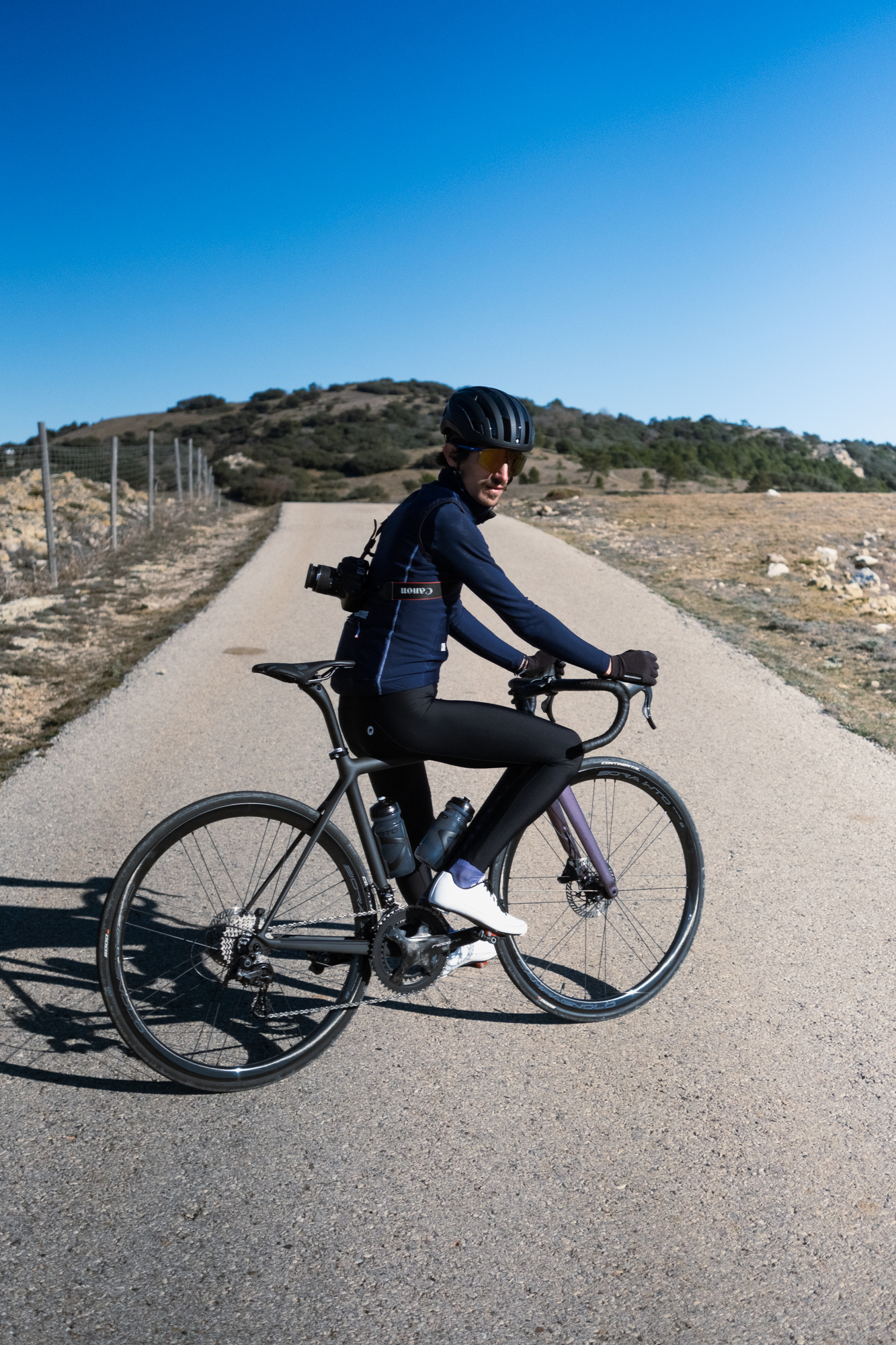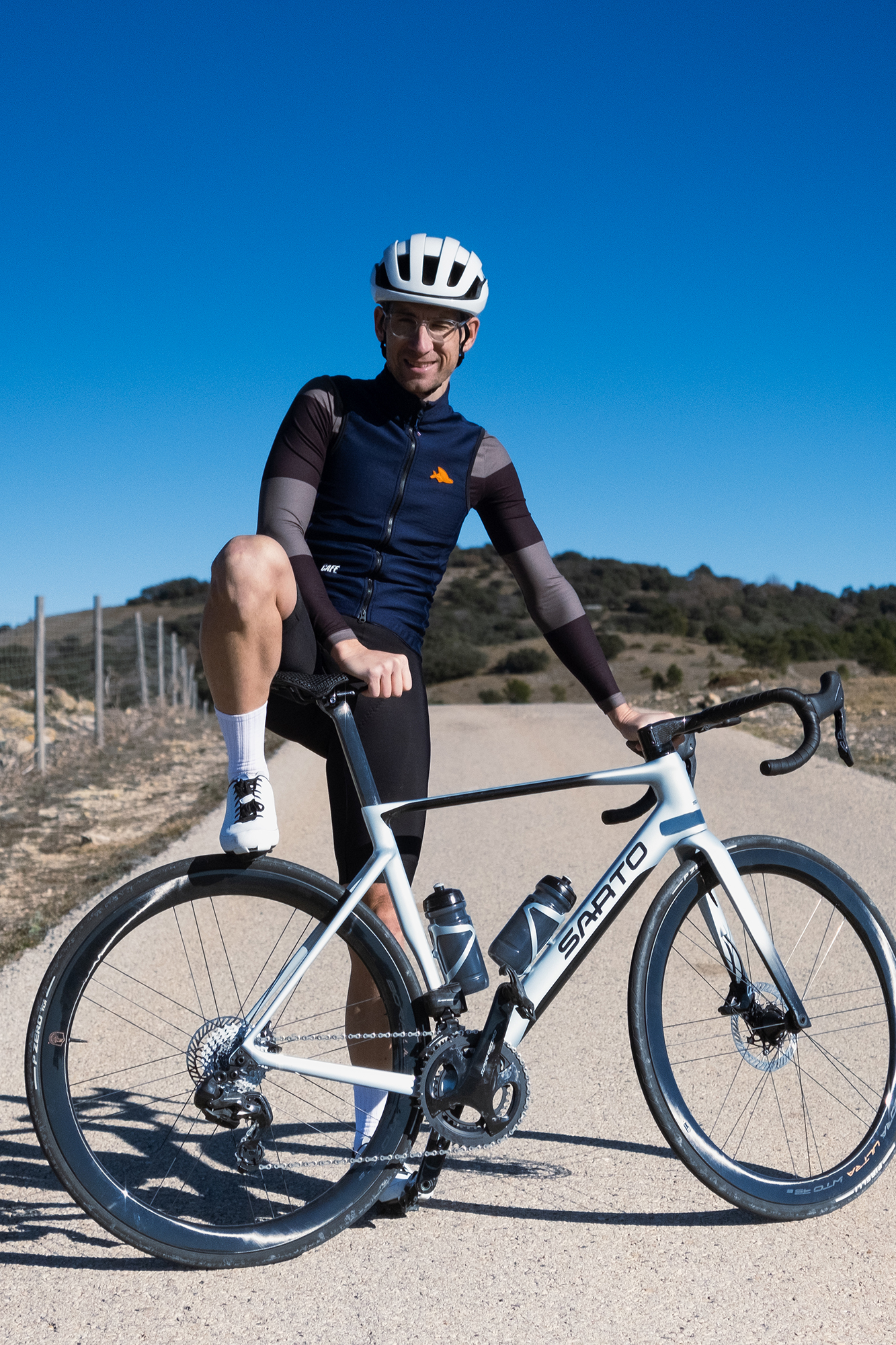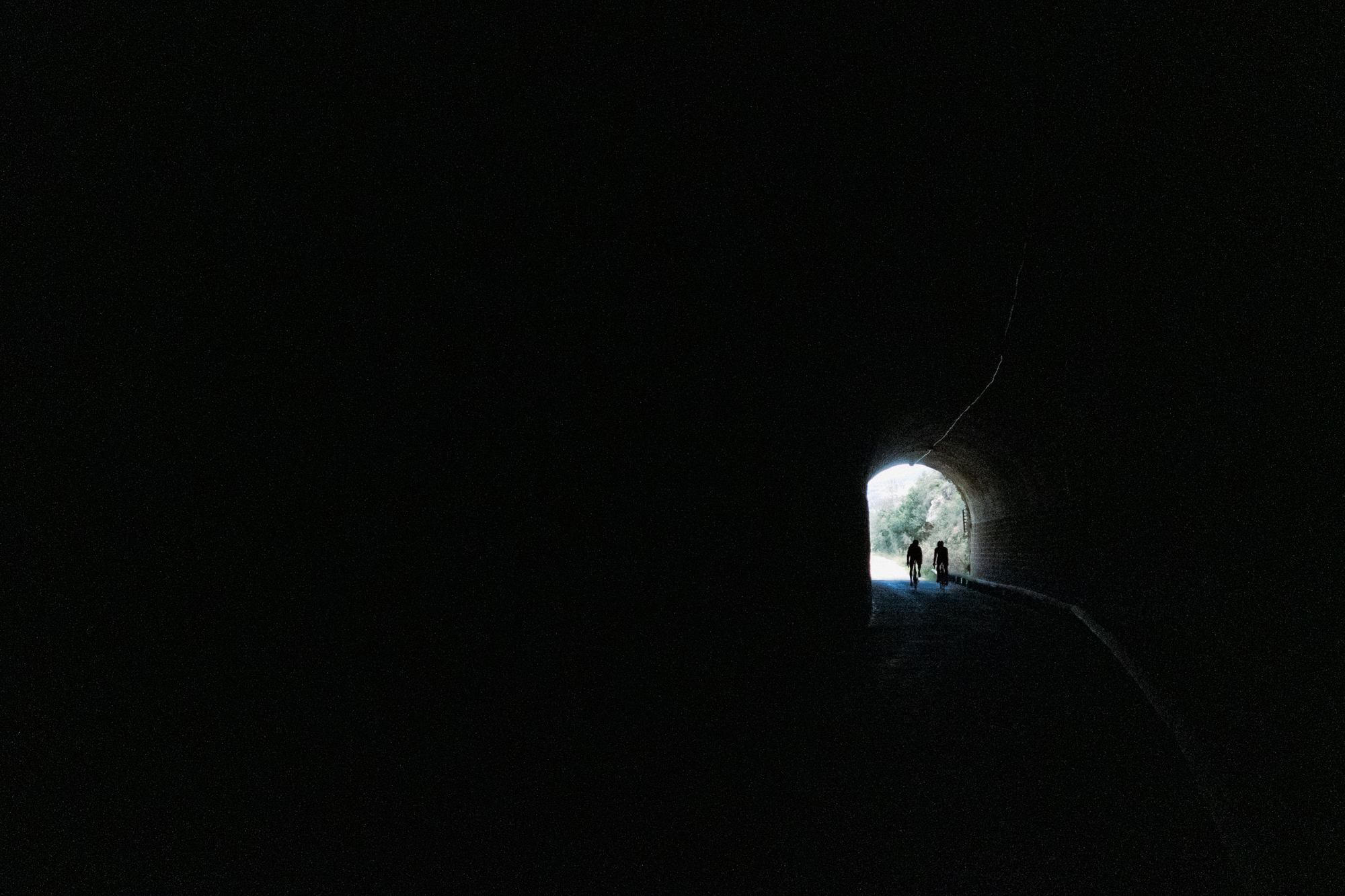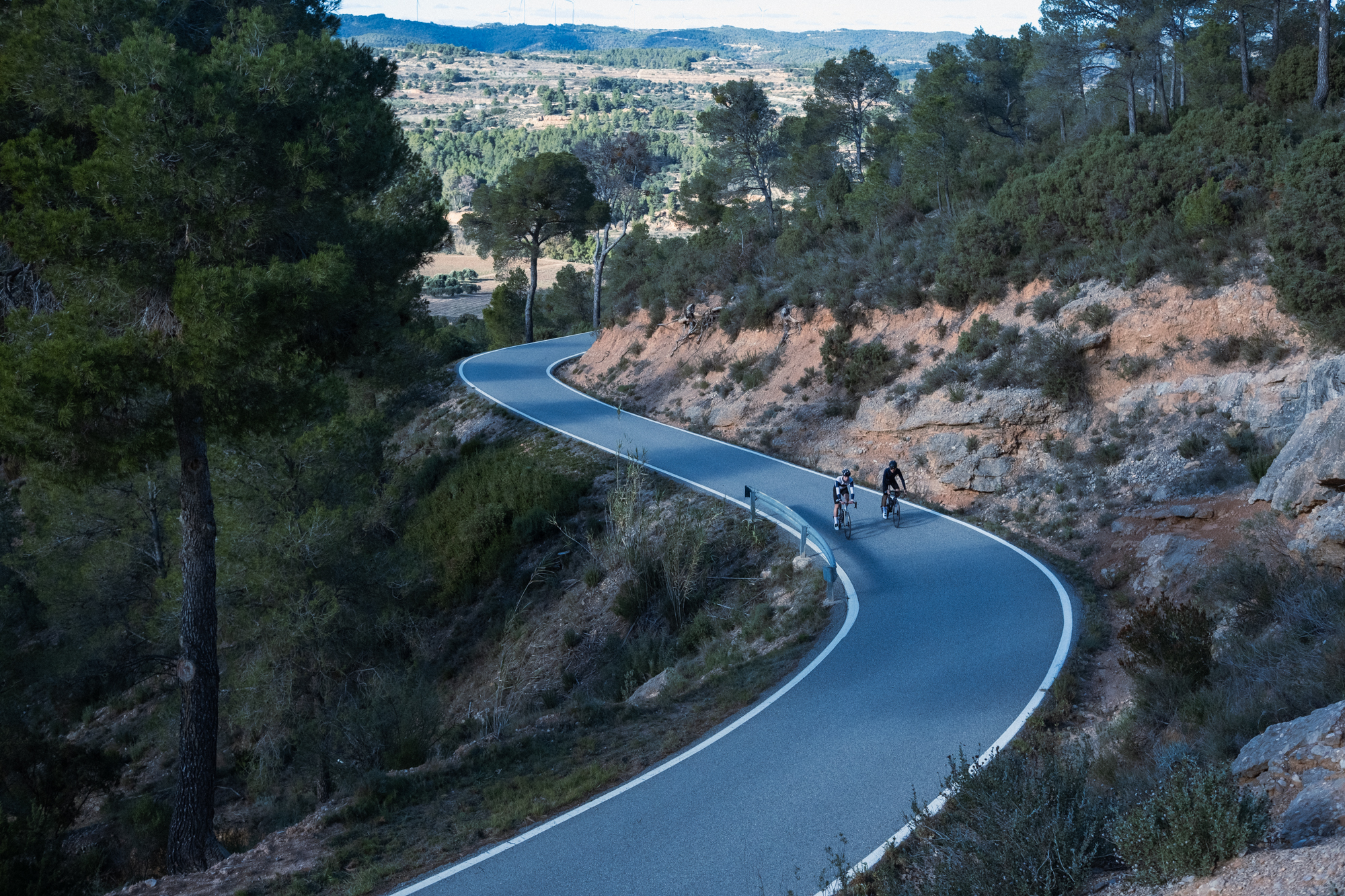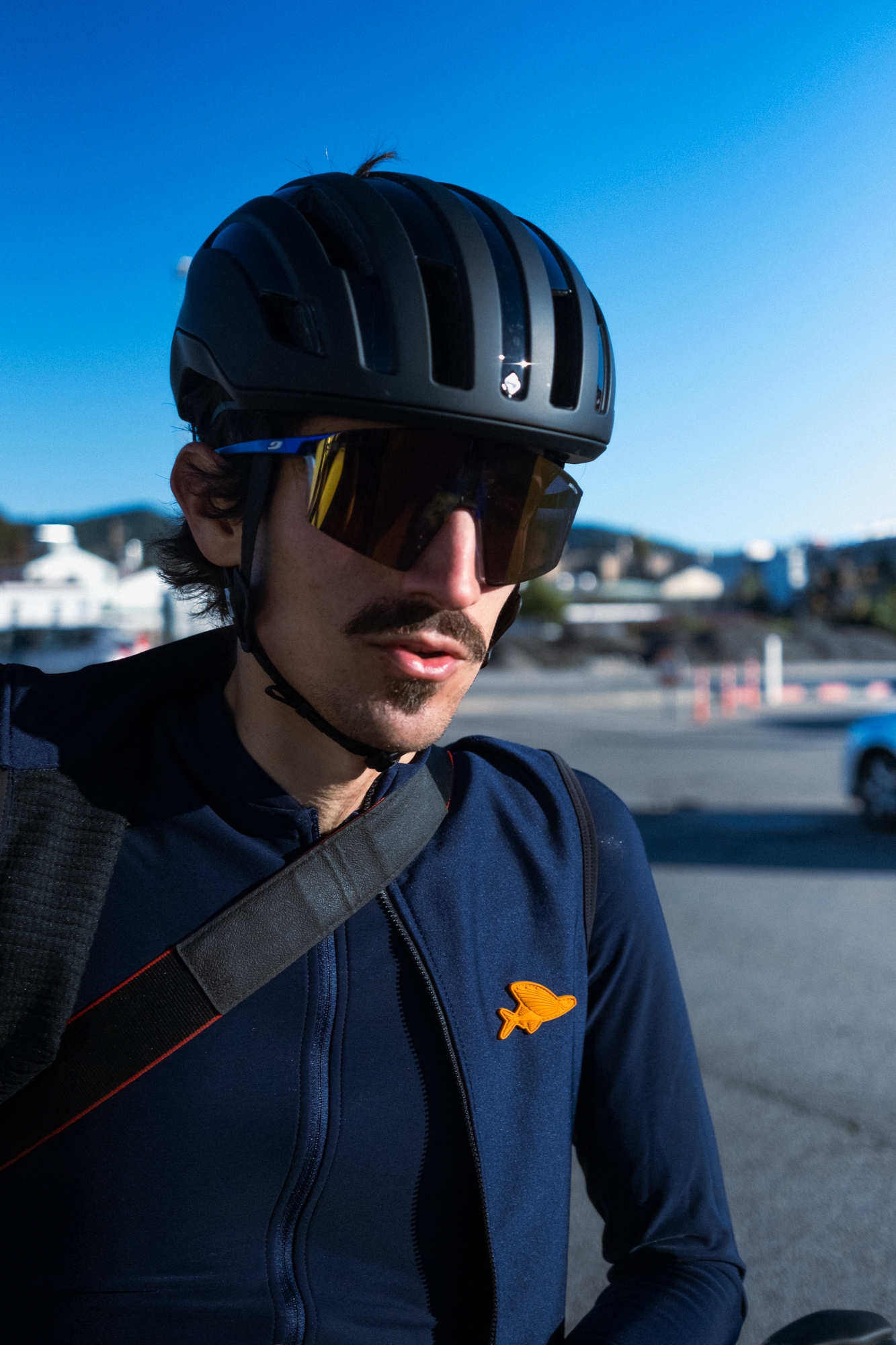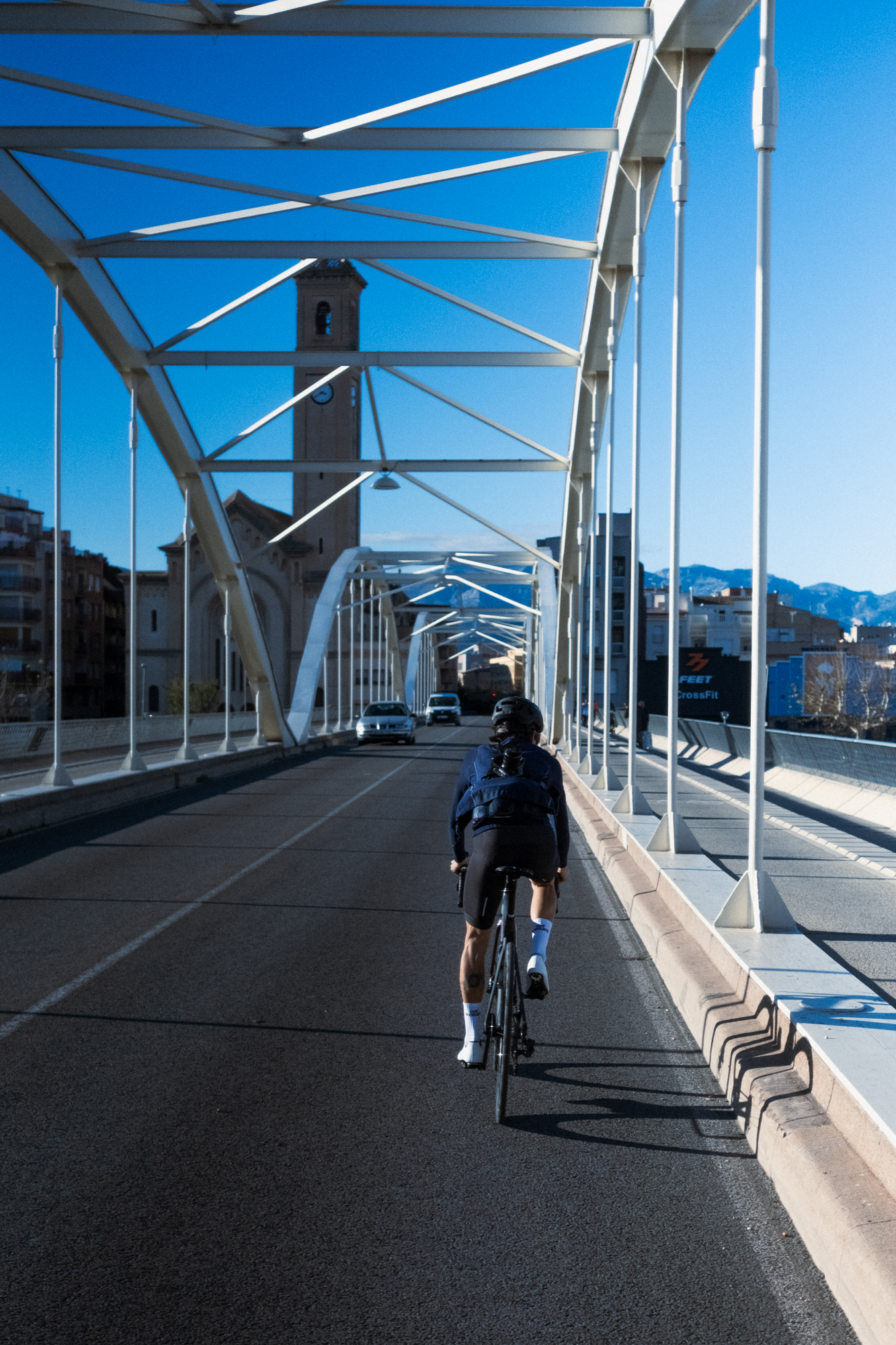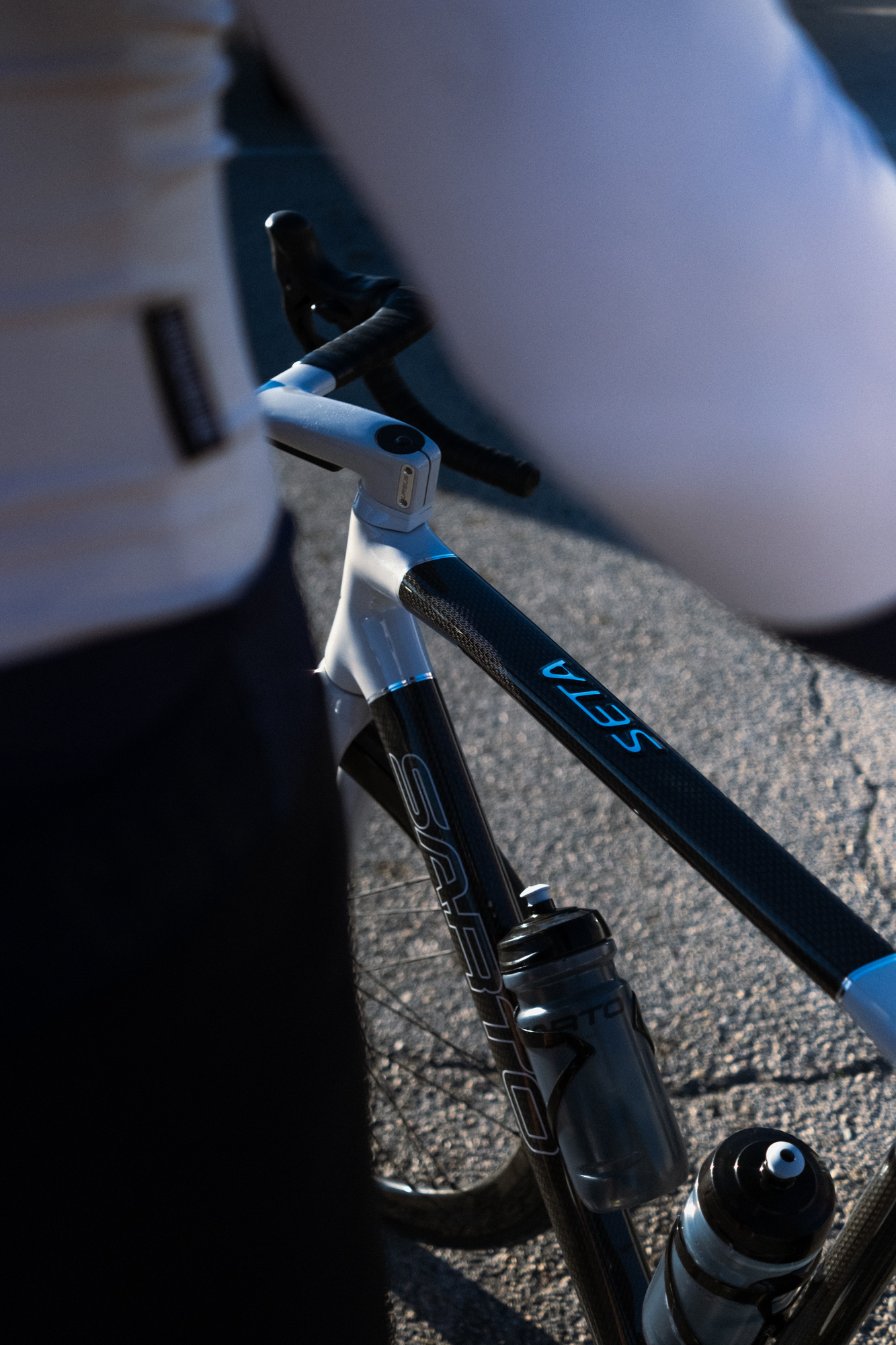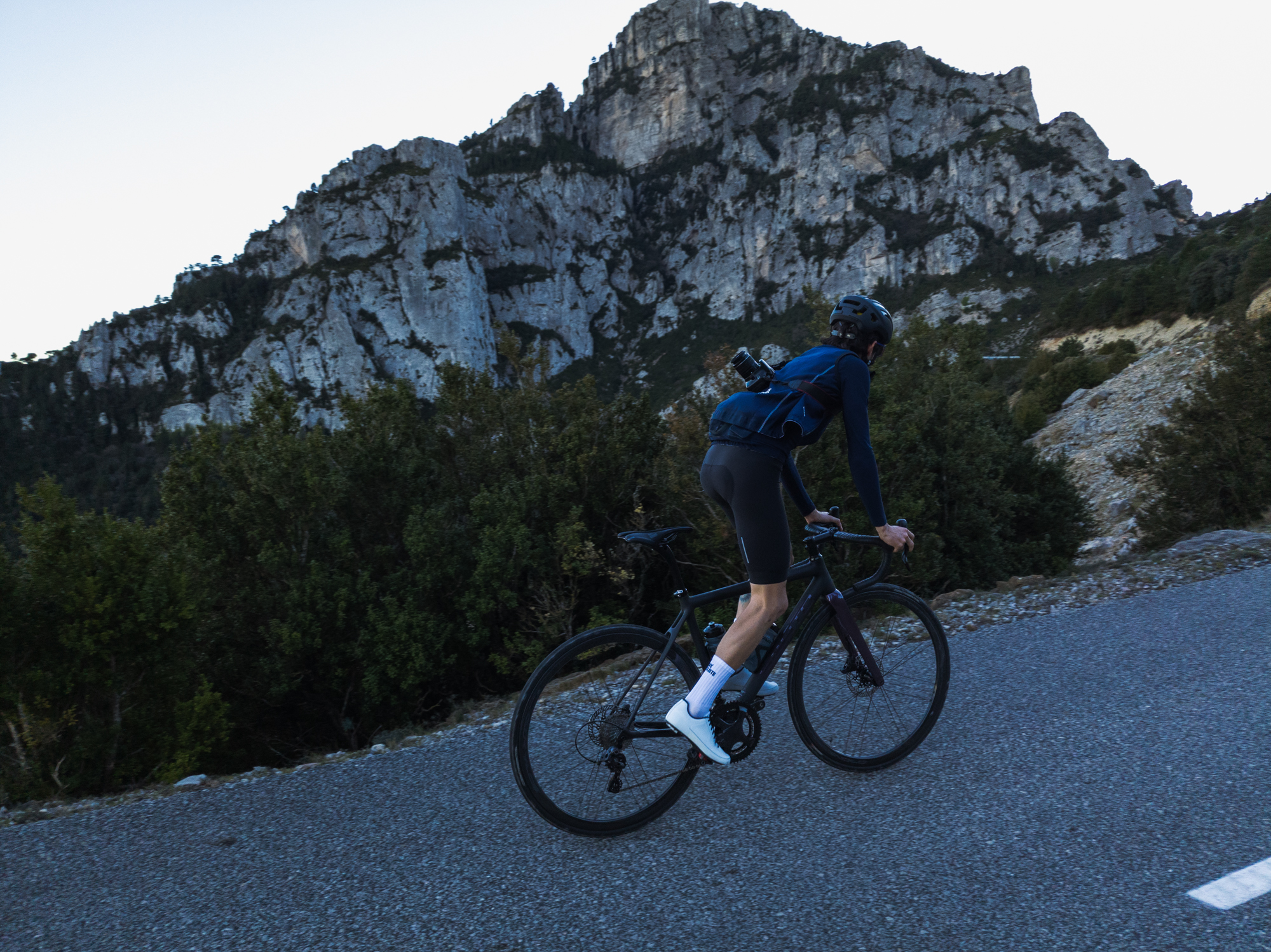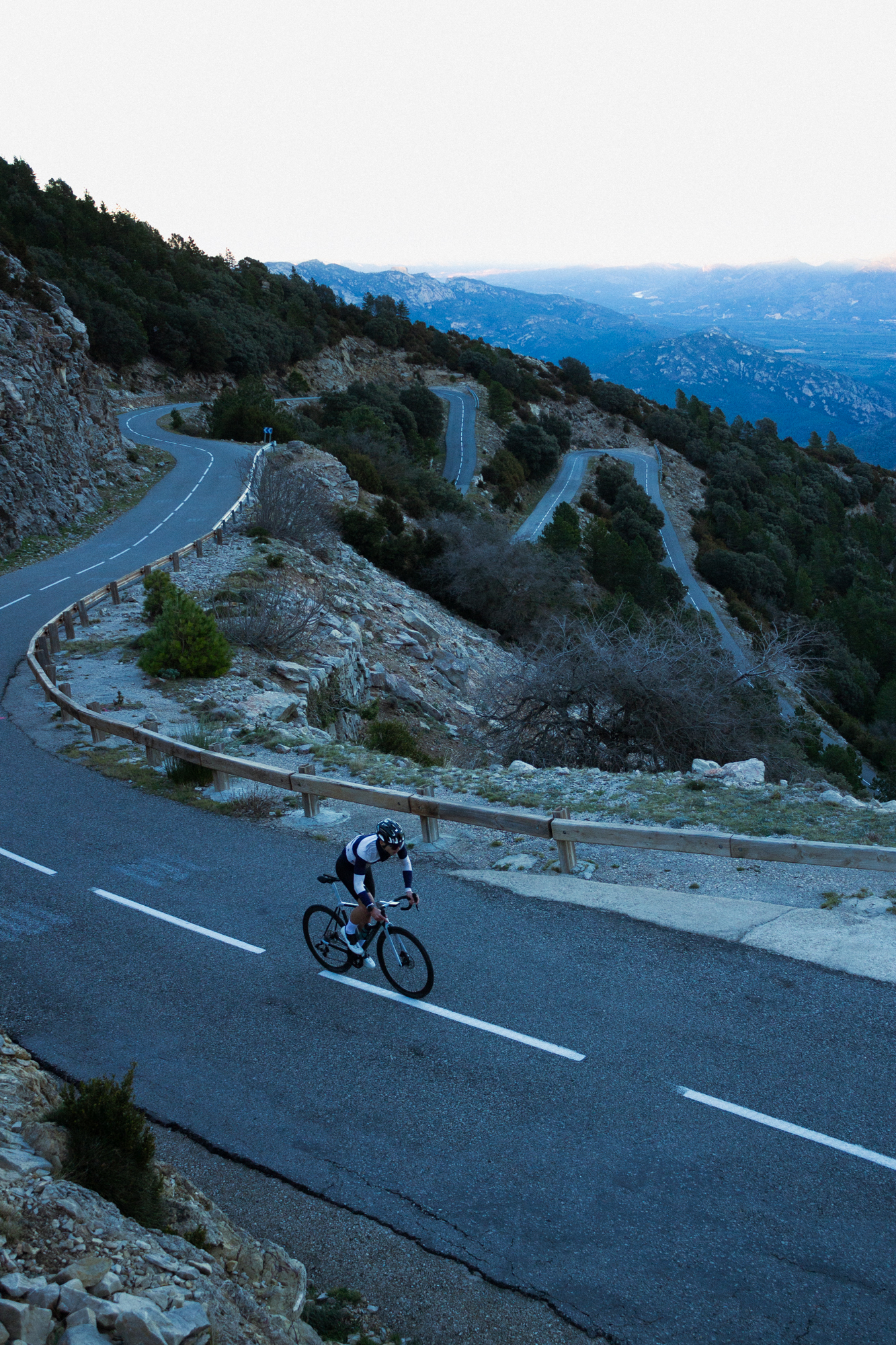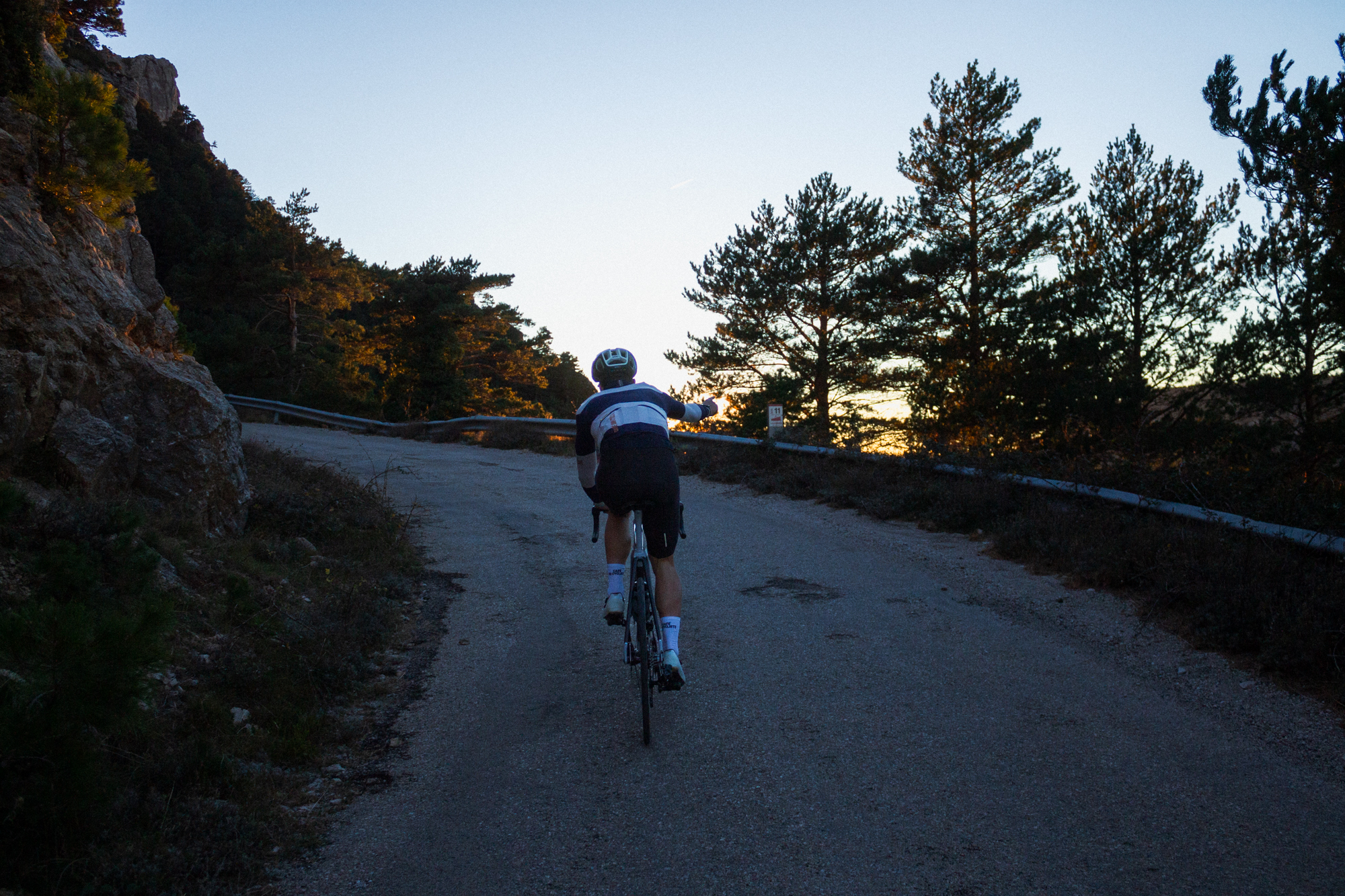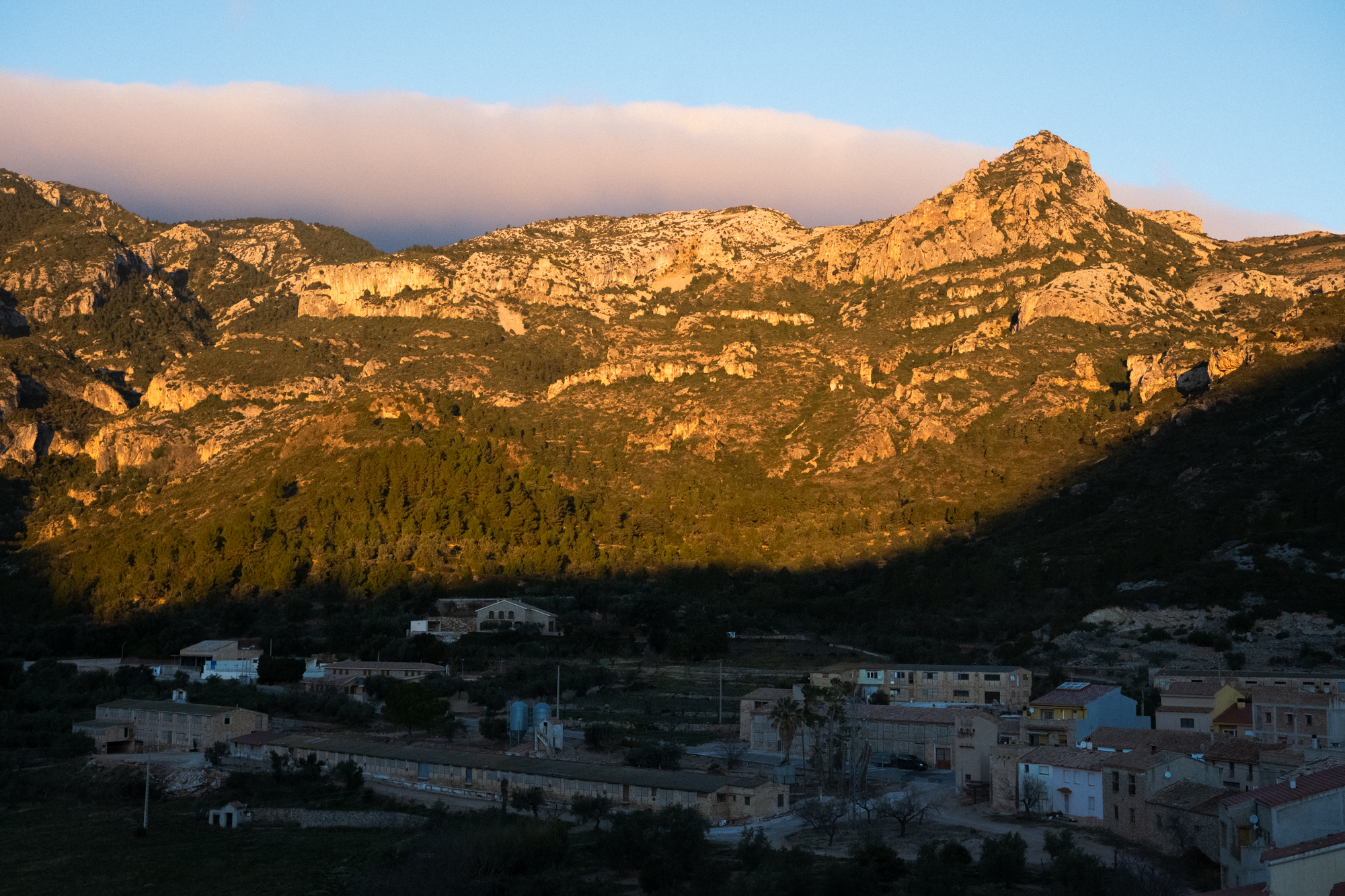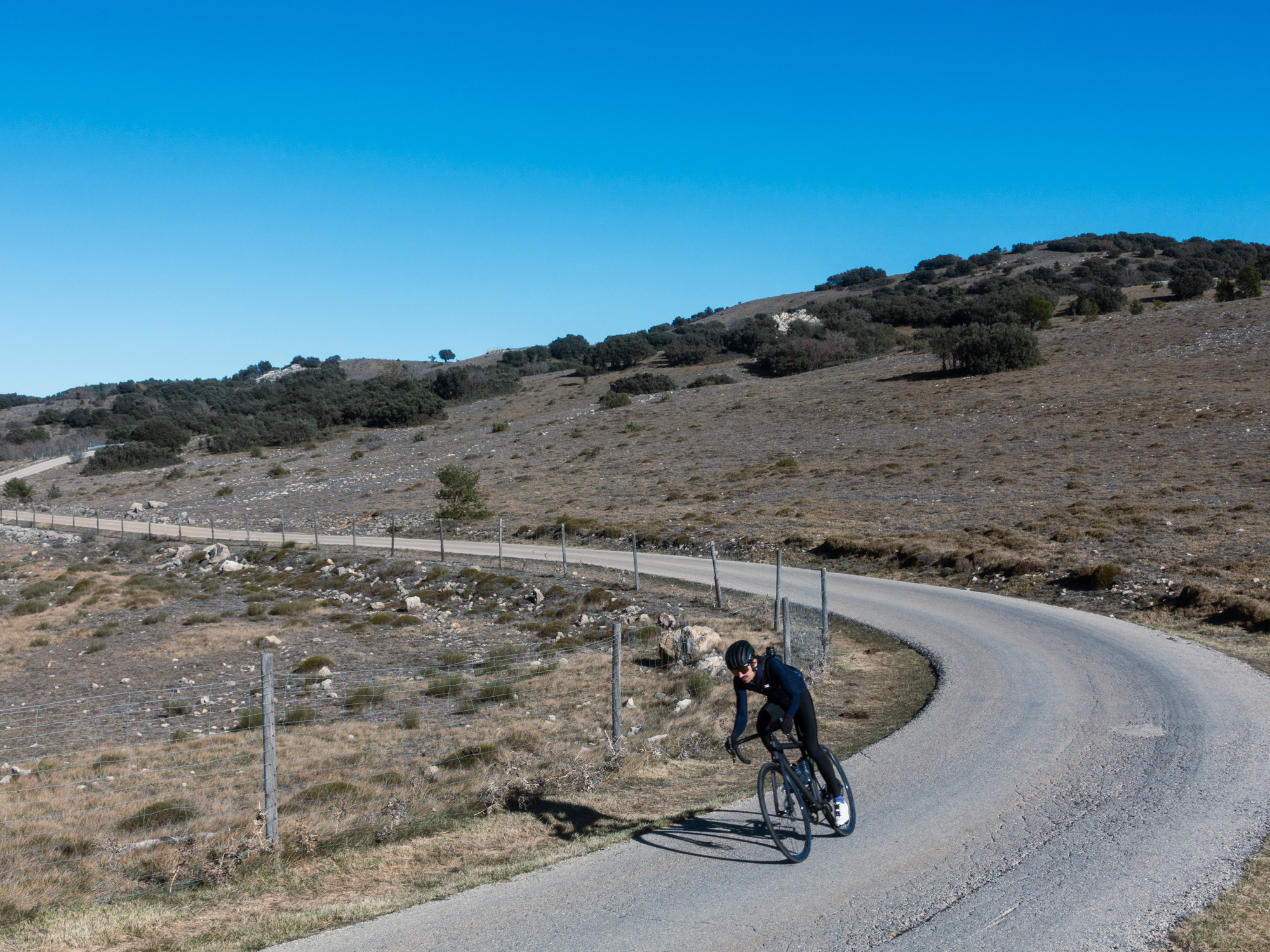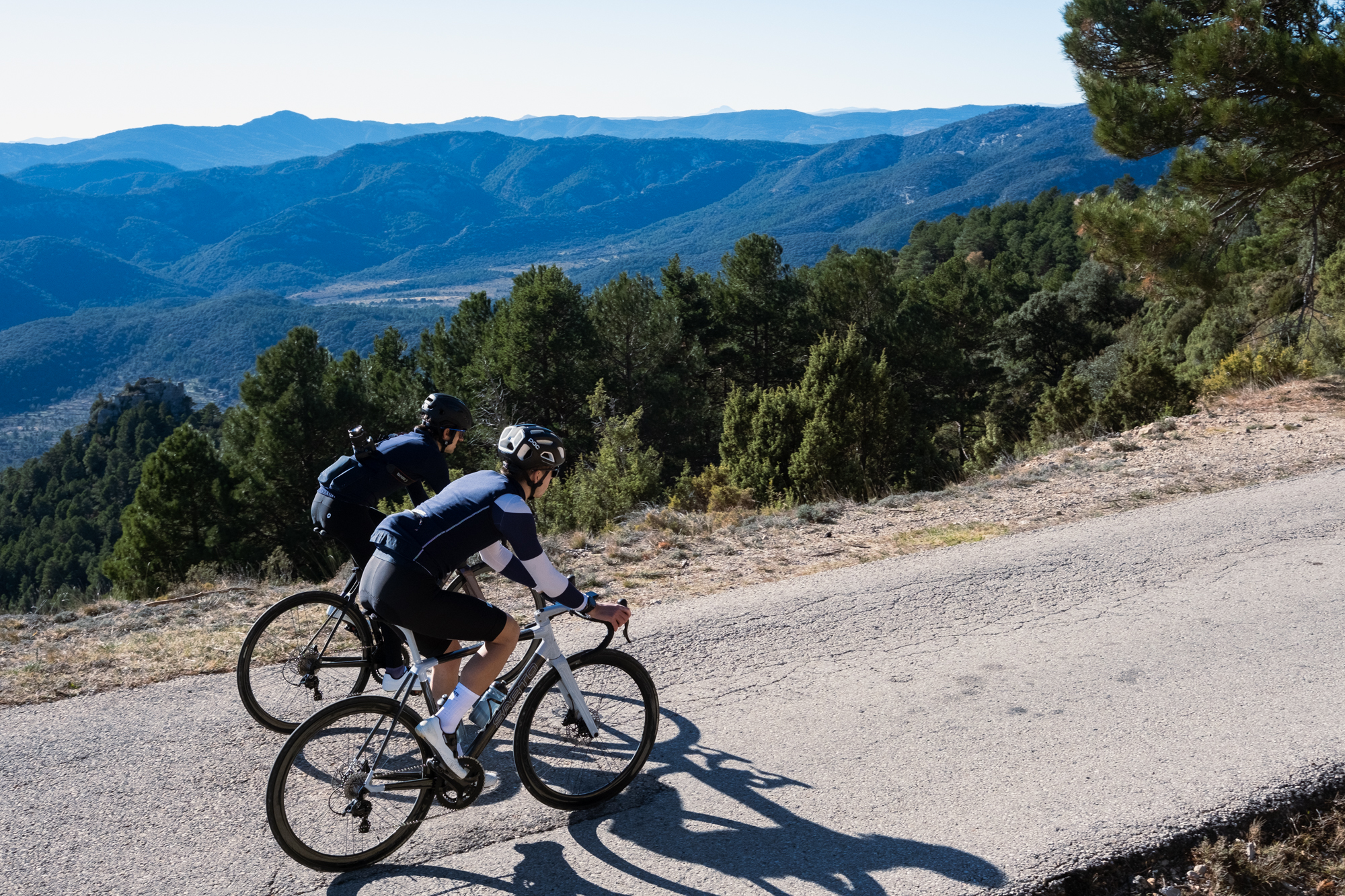Even if we can proudly say that our 2023 was already full of cycling adventures, we didn’t want to miss the chance to go out on a last outing before the end of the year, even more if the weather allowed for that.
For this occasion, we set our eyes on the Parc Natural dels Ports, in the southernmost part of Catalonia. The temperatures there are typically warmer than closer to the Pyrenees, and that area also features several climbs and roads worth discovering. In particular, the main highlight of the adventure was going to be the Mont Caro, a monster climb that goes from sea level to 1.435 meters of elevation over 22 kilometers. We were going to end the year on a high, both figuratively and literally.
This happened on the Christmas weekend, and while most people were wrapping the presents ahead of the family gatherings, we were busy unpacking and fine tuning the Sarto bikes we were going to ride with and trying out the road collection from Café du Cycliste. All bikes featured custom-made road carbon frames, specially built for the occasion.
We would be riding three different models: Raso, Asola Plus, and Seta Plus. Each one was specifically conceived for a particular task, whether it was climbing or cruising on the flats. A special mention to the Raso must be made, as we got to test the new and enhanced version, which featured a fresh out of the oven integrated handlebar and an improved tri-composite carbon that made it even lighter and yet stiffer, the ultimate racing machine. Besides, all bicycles had Italian components from Campagnolo, both for the groupset and the wheels, for precise shifting and a perfect balance between lightness and aerodynamics. Of course, there was only one way to bring the utmost excellence for the finest Italian craftsmanship.

We got to the accommodation the night before the start, and we honestly thought that we were going to abort the mission. If on the way to the Natural Park we could already feel the wind hitting our van, once we jumped out of it, we were literally blown away, turning the simple task of putting our baggage inside the accommodation into a high-risk undertaking. We checked afterwards and there were up to 110 km/h gusts of wind recorded in the area that night.
Day 1 – Mont Caro
Luckily when we woke up the situation was more tolerable, and it would continue winding down during the morning. The route we were going to do over the weekend is a circular 260-kilometer loop with 5.000 meters of elevation gain, and we chose to start in Valderrobres.
This municipality, which still preserves many medieval constructions like the arched bridge, the 14th-century castle, and the church of Santa María la Mayor from the 16th century and declared to be Historic-Artistic Heritage, seemed to be the perfect point to start and finish as it allowed an even split of the full loop. Besides, Valderobres is included in the “Los pueblos más bonitos de España” list promoted by the Spanish tourism agency to highlight the most beautiful places worth visiting, and we have to agree with them.
We left the village behind and covered the first kilometers in the autonomous community of Aragón before crossing again to Catalonia. That first stretch also included a part along the Via Verde or greenway from Tortosa to Alcañiz that used to be a railway and that nowadays both casual cyclists and hikers frequent throughout the year. The surface was far from smooth but the views compensated for it.
In a matter of a handful of kilometers we rode through countless tunnels and aqueducts. We were not ready to ride in the dark over the tunnels as theoretically there are some lights that are turned on by movement sensors, but it looked like they were malfunctioning and we had to figure out a way to cross them. It was a funny situation.
That segment finished in the old train station of Bot, and we used it as an excuse to stop and eat in a small bar before continuing our journey to Mont Caro, even if we were still far from halfway. As every cyclist in Spain does, each of us got a bocata de tortilla, and we ate it quite fast as, from the one side, it was quite cold in the shadow, and on the other side, we were starting to worry about making it to the end of the route with enough daylight left.
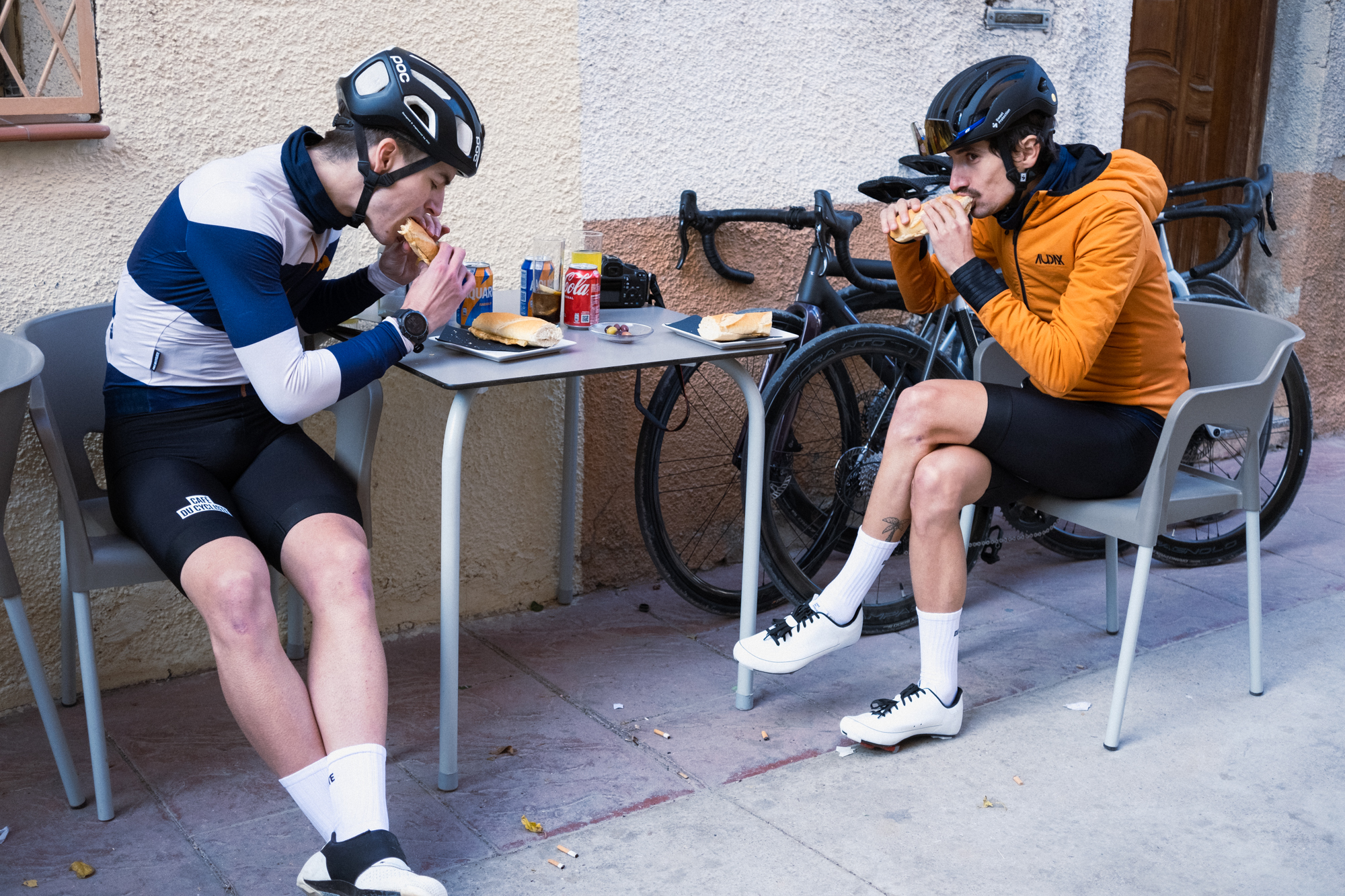

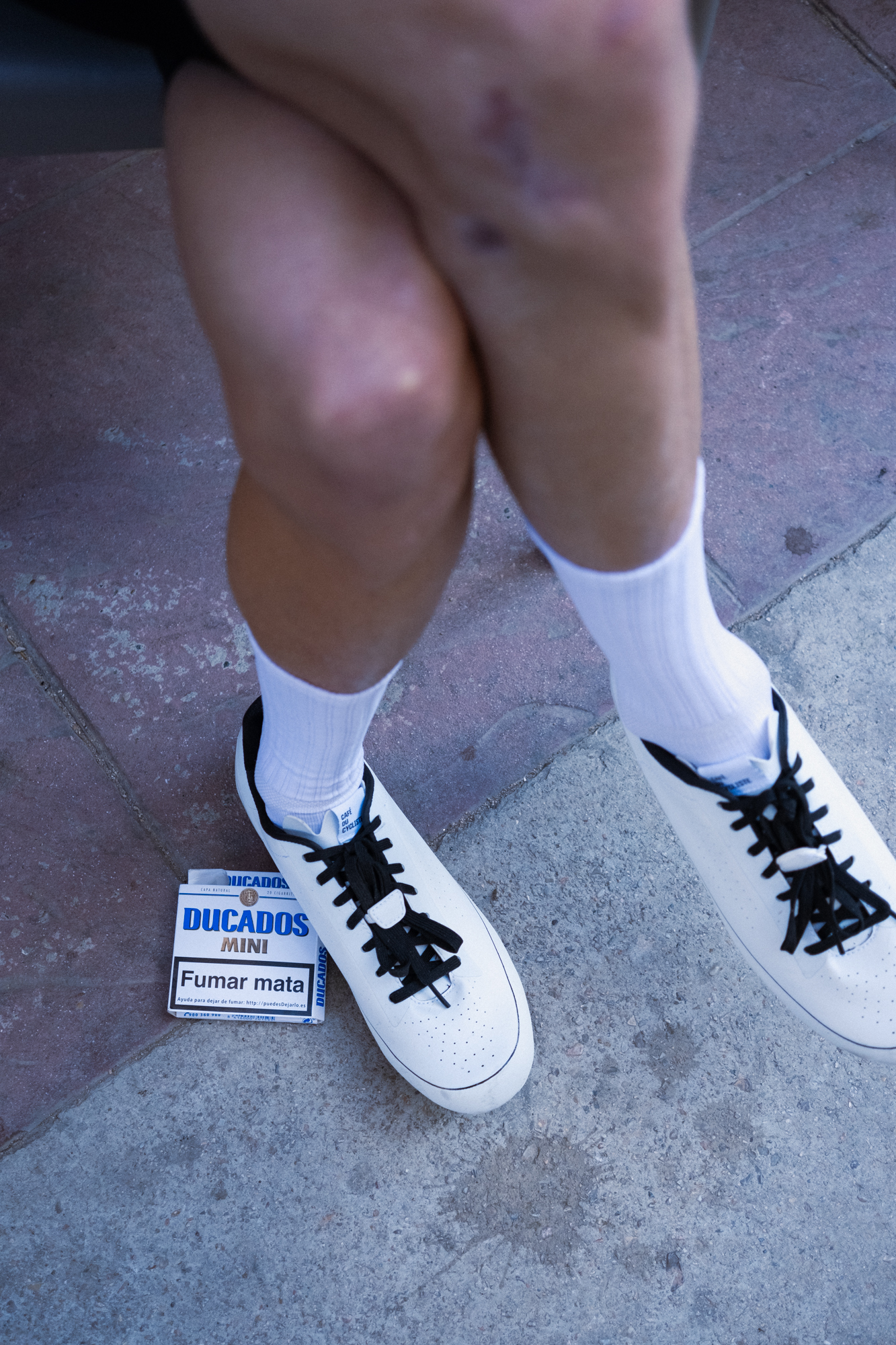
Add the Coll Ventós to your route if you are planning on riding in the area, as we were positively surprised by its beautiful hairpins and the views to the peaks of the Natural Park. We then decided to follow secondary roads to Tortosa as originally planned instead of directly descending through the shortest way to the city, hoping to see more of what the area has to offer.
On our way, we crossed the Ebro, the longest river in Spain, once to get to the other side and cover some fast kilometers along a twisty road, and then again once we arrived in Tortosa. There we would stop to refill bottles one last time before tackling Mont Caro. The peak was in sight, and although it seemed very distant we were eager to reach the top of it. There was no time for hesitation as the sunlight was starting to fade, and those last 20 kilometers were expected to be counted down very slowly.
Even before we hit the first two digit slopes we were already tired as we faced a headwind in the initial kilometers of the ascension that highlighted the extenuation of our tired legs. The stops for taking photos were limited and we decided to climb at a pace that would bring us to the top of the climb before civil twilight.

The light was already limited from the beginning because the road to the top faces east and the mountain covered the sun that was setting behind but we could see a beautiful color gradient on the horizon at the sea. The incoming sunset as well as the altitude prompted the temperatures to drop dramatically in a matter of minutes, and our GPS unit showed 0oC at the top of Mont Caro. However, the toughness of the climb forced us to keep pushing which kept us warm and, despite the wind gusts and the poor light, we all made it to the top in time to see the last rays of sunshine and the whole valley and the Mediterranean sea at our feet.
After returning to the accommodation, filling our bellies with a hearty meal and quickly going through the content created that day, we headed straight to bed. The next day was Christmas Eve, so we would have to start just at sunrise to cover the remaining 132 kilometers of the circular loop and get home in time.

Day 2 – The high plateau
The first kilometers were in descending direction and there were no clouds in the sky, so the morale, at least in the first part of the day, was high. Olive tree fields were the only thing we saw for over an hour, until we turned east in La Sénia, which also marked the start of our foray in the Comunitat Valenciana. Looking at the profile there were no hard climbs expected, but the truth is that from La Sénia we would start a moderate but long ascent that would pay a toll on our bodies and would take us to Fredes.
From that point on we felt like we were in a remote location, as we were completely on our own during most of the remainder of the route. The tarmac was perfect, though, and we constantly wondered why this area is not frequented by individuals and teams looking for mild temperatures during the winter months.
That climb took us to over 1.100 meters of elevation, but there was no descent on the other side. For the next 30 kilometers, we would stay in some kind of plateau in altitude where the road was outlined by winding ups and downs between isolated villages and fields populated by cattle. It was the perfect test ground for our Sarto bikes, as we could check first hand how well they perform in that concatenate of short hills. If it weren’t because of the weapons we were riding, we are not sure we would have completed the full loop.
After this exhausting terrain and a cold headwind that seemed to never end, and despite the astonishing views of the sea of mountains, we finally arrived at the desired rest at around the 100 kilometer mark of that day. From there we would start descending towards Valderrobres, the village we started the day before. Before getting there we would face some minor climbs and some rolling terrain on main roads that we were happy to leave behind.
In two days we had completed the loop around the Parc Natural dels Ports. Despite some of us having already been there, we were all completely mesmerized by the beauty and remoteness of the area from the beginning. The 260-kilometer loop allowed us to test the Sarto bikes and we are happy to say that these machines are built to perform in all situations. Besides, despite the cold weather and occasional wind we came across, Café du Cycliste took good care of us. All in all, a great discovery that pushes us to keep on with these adventures, because sometimes we don’t have to travel far to find hidden gems.


